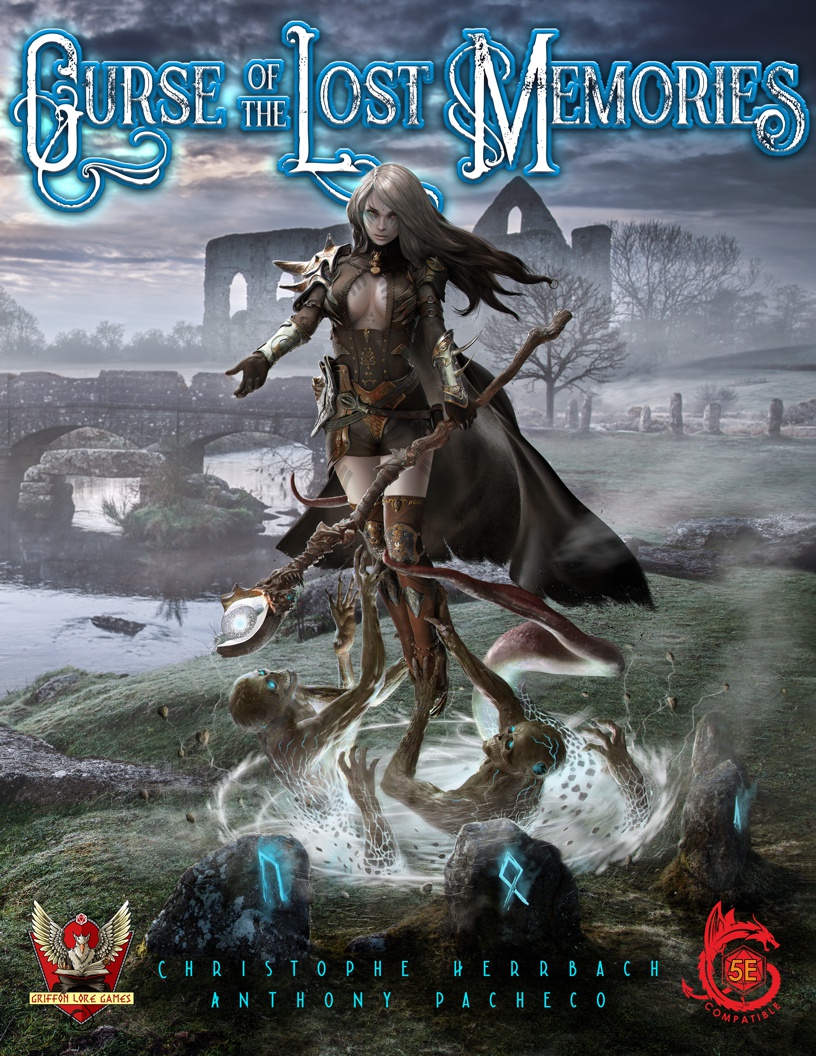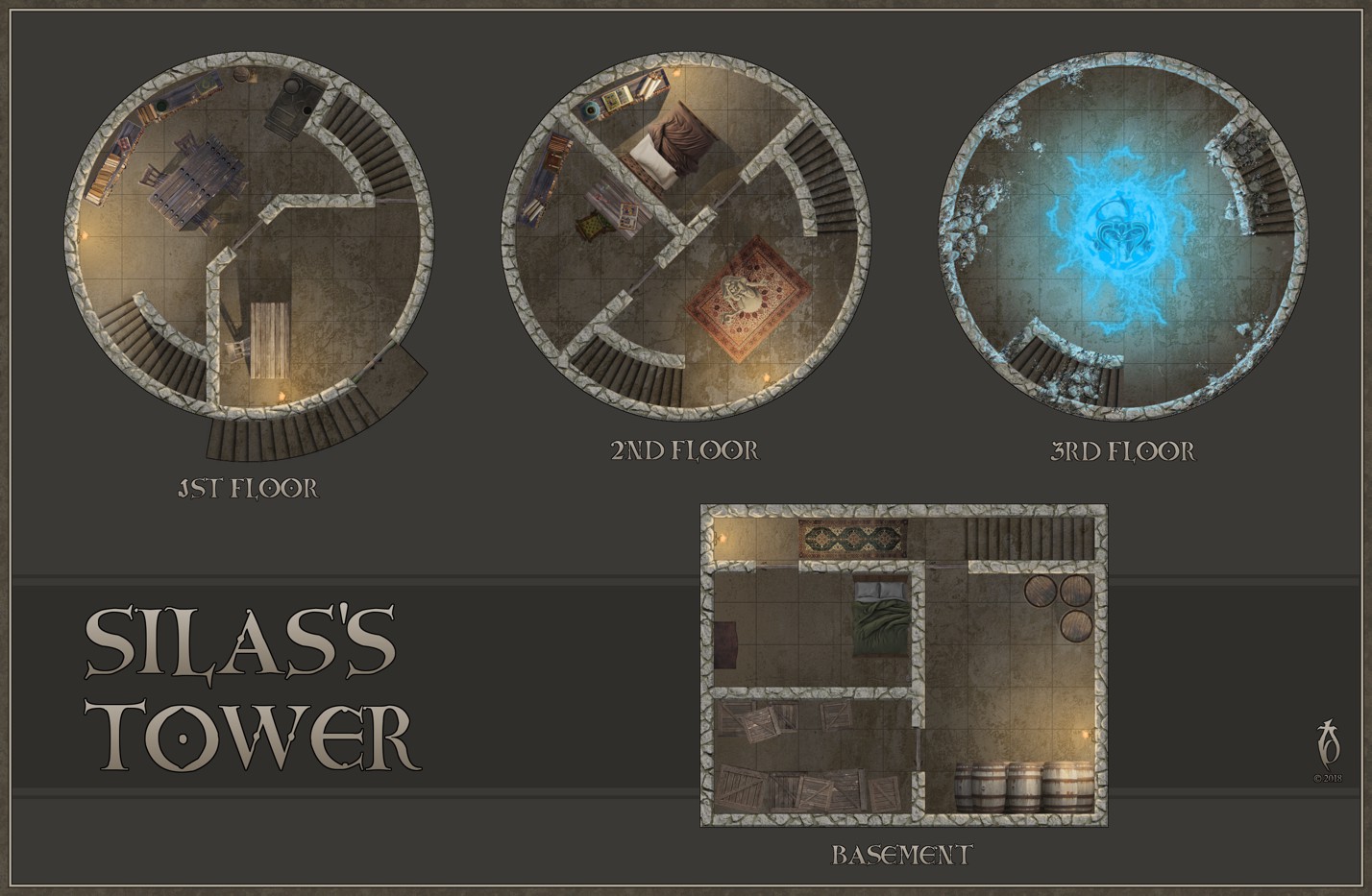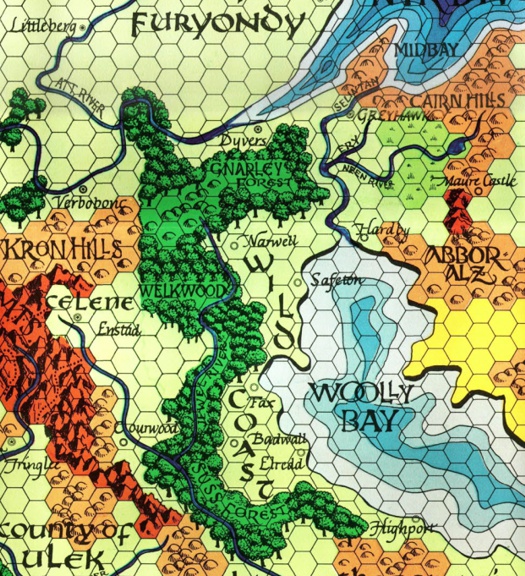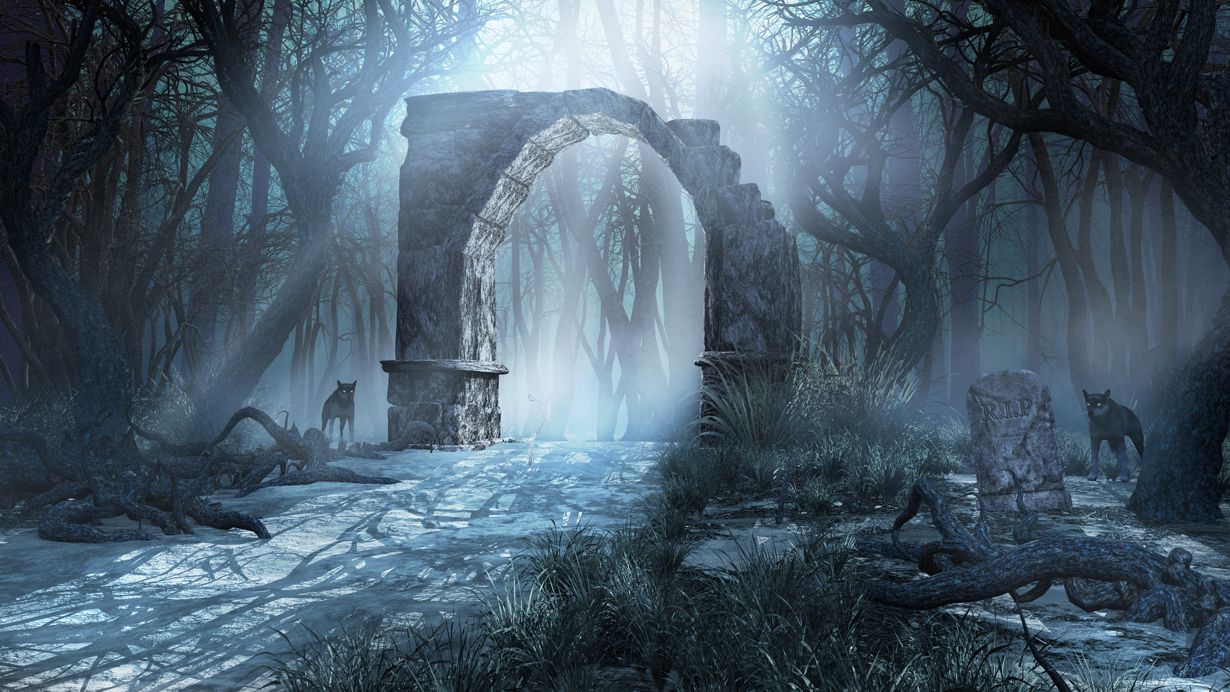
As books start trickling out, here is a DM-centric guide to starting the campaign. Curse of the Lost Memories gives you the credits and jumps right into the thick of it to get the campaign started. Due to page count, what is not in a book is a discussion on how to carefully start your campaign to maximize the game’s fun for both the players and you. So let’s back up to the beginning: why run Curse of the Lost Memories?
Hard Fantasy Means Grit, No Handwavium, and Rationality
Curse of the Lost Memories is hard fantasy.
Hard fantasy has a rational, plausible system of rules for the setting, which includes the definition and use of magic. The system used does not bend for a narrative, “hand-wavium” convenience. That doesn’t mean that hard magic has a scientific explanation and current logical principles; instead, it has internal consistency.
Hard fantasy doesn’t necessarily mean low fantasy (and the Kingdom of Lothmar is definitely not low fantasy) and not just about magic, but does take into account magical principles on everyday society—and this impacts your game sessions.
As a DM, this is the difference between Griffon Lore Games settings and other settings—especially settings that are post-apocalyptic (Greyhawk) or built on the many ruins of previous societies (Forgotten Realms, Numenera). If something is magical, it conforms to the rules of magic and not merely something that the DM explains as “powerful magic from the ancients.”
This is the time of the ancients. Your PCs are running around in a setting that is the height of magic—divine and arcane. Even the ancient druids, reputed to have drawn the gods to the Welt and had access to primordial magic called “world spells,” are bound by limits—as evident by the disposition of the PCs being curse up the wazzu. World Magic isn’t gone for good, the PCs are cursed and don’t have access to it.
But in the last module of the campaign (adventure path in Pathfinder terms), PCs can grab the reins of this primordial magic. They will need to make some tough choices on how they exit the campaign.
So, no handwavium. Keeping within the attributes of hard fantasy gives you the tools to add conflict and tension within the fantasy system.
Grit
It’s a gritty world out there in the Kingdom of Lothmar. The common folk have a good life and have a reasonable expectation of living their lives without violence and pestilence. Females usually survive childbirth, and infant mortality is low–all characteristics of a fantasy setting with access to knowledge and magic defined by 5E and Pathfinder.
However, commoners know that if they wander too far from other people, it’s eat or be eaten. Travel along the old Imperial Road system is mostly safe, but people who don’t stick together, or travel under the protection of a knight or men-at-arms, are fair game to all manner of hazards. Everything from trolls to natural hazards such as flash flooding, to political rivals, are hazards. And wandering into the wilderness, while rewarding both spiritually and possibly monetarily, is perilous.
People in Lothmar have a high sense of community for safety reasons. Going it alone is harsh, and so the feudal system isn’t merely a method for controlling the rift-raft. It’s a mechanism to keep people alive until old age.
So, people like the PCs, who wander off the beaten path, usually hired by knights to go clean out some den of nastiness, are viewed with awe, deference, reverence and a bit of suspicion.
DM Tip: As the adventure progresses, keep the rationality of the magical system, and, in conjunction with the setting, that will add immersion to your game sessions. Avoid effects that can’t be explained within the confines of the game books, source material, and internal consistency.
Scale vs. Open World Gaming
Scale is a campaign killer.

There is a reason the Village at the Crossroads has significant detail oriented around the common folk and the power players—it provides the adventure a sense that the world continues when the PCs are not in it.
This is the basis for world-building. A world that seems to exist outside the context of the PCs is a world that is fun to play in because it doesn’t adjust by plot convenience but rather by the motivations of the PCs and NPCs within it.
Sometimes shit happens. In the Kingdom of Lothmar, flooding is a natural hazard, along with poor harvests and sometimes draught. Events such as these add to the gritty feel of the world.
So, what does this have to do with scale? By deemphasizing the hazardous nature of overland travel or by having the plot having the PCs wander hundreds and hundreds of miles in the early levels, their level of interest in the world around them appropriately decreases. Why become friends with the local knight if the module sends your 300 miles north? Who cares if the Dame needs help if the PCs are going to abandon them all in pursuit of a goal?
Every time we, as DMs, give players an excuse to not care about NPCs, they’ll take it. Nothing says Fuck Your NPC like requiring PCs to go where those NPCs aren’t.
Conversely, an open world has its own challenges. The PCs could contrive a reasonable and rational reason to travel outside of the bounds of the module. What’s a DM to do?
DM Tip: This is D&D. Well, 5E and Pathfinder, but both D&D. The DM in an open world where players have agency has the responsibility to world-build. But the players also have the responsibility to play the game. Tell the players if they want to wander off the map, you as the DM need time to prepare for that. I’ve even gone so far as to end a game session early—hey, you guys wandered in a direction I don’t have fleshed out. Let me take care of that, and we’ll pick it up next session.
Consequently, the players also have a responsibility to tell the DM, if they know where they are headed, that actual direction. Ahead of time. Communicate this in Session 0. However, back to the actual module, regardless of the reason, there are no answers to their curse outside of the Barony of Lothmar.
We plan to have Campaign Guide out this year. It will be a big help for running a campaign in our setting, especially with players that like to wander and meet NPCs.
Motivation: the DM NPC Hack
One way to immerse your PCs into a game setting is to have convincing NPCs. And NPCs that have their own motives articulated and documented become NPCs that, again, seem to exist without the PCs.

DM Tip: But what also adds to the world is the changes the PCs and NPCs. The PCs have their own motivations (impacted by your players’ motives!), and so do the NPCs. Keep track of both the listed NPCs desires and disposition towards the PCs and adjust accordingly. This is the hack to the entire campaign—you don’t need to keep track of all the reasons Sarah doesn’t like the PC Bard (although as a bard you can probably guess). All you need to know is her disposition is hostile. She’ll pursue her own interests, as documented by her NPC description, but she’ll also have an inclination to act one way or the other to the manipulative and shallow bard.
Hard Choices – Mechanics
Beyond campaign philosophy that adds flavor to your adventure, there are mechanics the DM should become familiar with and use to his or her advantage.
PC Character Creation
The DM needs to focus on the introductory chapter. The Player’s Guide doesn’t explain how to implement the boon matrix or the other bonus attributed to their character sheet and it certainly doesn’t discuss their curse. The DM may want the players to have fun mixing and match PCs to boons instead of using the suggested curse/boon.

DM Tip: Use the Pre-Generated PCs to reveal the mechanics behind the individual boons. If you have Hero Lab, the POR files can be of use (especially if you are using Pathfinder) to illustrate the mechanical effect, which is also on the PC character sheet. Each PC also comes with a backstory with support of the campaign lore, some of which we have not published yet.

For 5E campaigns, we use the Epic Boon and Bonus Feats mechanic. Since Epic Boons are not in D&D Beyond (a standard tool) yet, a player can implement them using feats and custom feats that they can apply from the character sheet. In 5E, The Player’s Handbook and Dungeonmaster’s Guide is necessary to implement PC creation.

Difficulty Setting
The Fallen Barony of Wailmoor is a dangerous place. It’s been ignored for far too long and now whoever travels to there (the PCs), pay the price for this neglect.
DM Tip: Add to the grittiness by avoiding adjusting a Challenge Rating down. For any reason. We’ve given PCs extra powers for a purpose. If there are only three PCs, well, then, they better be sneaky little bastards, they better work in tandem and they better use the Lady in the Tower to help against the Dead Knight Harakan or they are going to die. A lot.
Some encounters may be too easy for a group of six—if the players aren’t playing cautiously, even with six players, there is reasonable chance (in Challenge Rating mechanics) for them to die in numerous places. And sometimes having six players leads to analysis paralysis, which, through inaction, can also lead to a TPK.
The Death Mechanic introduced in the module might seem like an MMO intrusion into our happy-fun world for Easy Mode, but it is definitely anything but. We encourage you to use it. “Never die” might seem like a boon, but it’s part of the PCs curse. And in the following modules, it gets worse. Players that don’t keep it together find themselves diminished and usually facing the same problem that killed them in the first place, but now with decreased ability scores until they level again.
Time, Your Campaign Mechanic
This is a module in a detailed campaign setting. Just look at Anna’s map to see the level detail available to the DM. And with that detail comes the advantage that time can add to a campaign fun factor.
There is no overall doom clock running. Some events will happen with or without PCs in later modules (such as war and faction conflict), and the PCs, if they ignore the corruption so close to the Crossroads Village, will be met with the devastation from their cowardly choice to ignore it. But within the module, the PCs themselves are rewarded by cautious, slow play, rather than rushing against the clock added for dramatic purposes with no other reason. Overused, a doom clock is both a break in both immersion and hard fantasy philosophy.
The Temple of Dvalin can take PCs months of in-game time to progress. It’s a tough nut to crack, using magic they don’t have access to yet (but will later), filled with terrible monsters in the basement (regenerating bone golem is regenerating), with requisite knowledge locked in a vault that requires personal sacrifice.
But it’s a choice, isn’t it? The players chose their classes and deities to worship. If one of them decided to be a cleric or paladin of Dvalin, well, their progression is going to be easier. It is not unfair if no one in the party is a divine servant of Dvalin. It just is.
That’s hard fantasy. Choices matter—all the way back to character creation.
DM Tip: Preserve the advantages of campaign play by not setting arbitrary time limits. During the adventure, the Wailmoor is their land. No one is going to bother them. It may be monster infested, corrupt land, but it is over 12-square miles, 144 miles of detailed territory, to claim as their own or extract the resources from within.
Religion
Speaking of Dvalin, religion infuses everything in the Chronicles of the Celestial Chains campaign. Sages have visited Purgatory and Mt. Elysa and come back with evidence of their existence. Everyone is religious in the campaign setting. Atheists are dealt with harshly in all lands as corruptive demon worshipers. For example, in dwarven communities, the local authorities will simply shrug, take the offender out back and slit his throat. In the Royal Lands, the person will be put on trial and banished. In the Duchy of Hardred, they are burned at the stake.
DM Tip: the Temple of Dvalin is the first place that players see how religion impacts the campaign world. These are the people, after all, that built the dam to the south that is powering all the corrupted and non-corrupted wards. As the campaign progresses, the conflict between Law and Chaos (as opposed to Good and Evil), brings religion into the forefront. A prudent DM should become very familiar with the religion appendix in the back of the module. DMs using their own pantheon (or a different product’s pantheons) will need to do some mapping between the deities presented to deities used in the campaign world.

But we hope you will consider our presented pantheon, with considerable expansion in the Kingdom of Lothmar Campaign Guide.
Race
Pay close attention to racial differences between our campaign lore and other products. Elves are not reincarnated bemoaning lost and ancient magic—they are eugenicists with the ability to invest a lot of time into furthering the elven goals and many cases, not friendly people. Half-orcs are not moody brutes but seen as the product of two warrior races and treated with awe. Dragonborn are not a race but the outcome of a dragon in human form mating with a human.
DM Tip: Both the Introduction chapter and the Player’s Guide define the presented races. Mechanic wise, educated people view two-legged free-willed beings with a soul as a single species and the variation of the soul-bound as racial differences. Encourage players to chose their race based on the definition in the Player’s Guide.
Final Thoughts
This is a tough adventure and can be made tougher without a lot of effort on the DMs part. PCs should encounter a mix of friends and enemies that are both easy to deal with and above their pay grade. We designed the Wailmoor to be an open-world, wander around type-of-environment. And they can literally walk into a floating leech swarm that sucks all their blood. Some players are not used to having so much agency. They could encounter 5 trolls at Level 1 and think there is some “trick” to overcome the encounter when the “trick” is merely to run away. Quickly.
DM Tip: Tell the PCs up front that this is less Harry Potter and more Games of Thrones. Tell them this is a setting where the bad guys are not villains in their own story. Encourage them without foreshadowing to read the player’s guide and to be less murder hobos and more PCs that can impact the world around them, for good or bad, with their mere presence.
As always, chat with us on our Discord Channel or leave a comment here to start a conversation.









